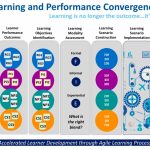Training Top 125 Best Practice: Red Roof Inn Inc.’s RED Academy
Learning management system RED Academy has allowed Red Roof Inn to better correlate training initiatives with business metrics such as customer service scores, turnover, and increased revenue.
Be Adaptable—Leadership Lessons from Jack Welch
Cultivate a flexible mindset to embrace change effectively to ensure organizational excellence.
June 2017’s Top Reads
More than 11,000 business books are published every year—an overwhelming choice for busy professionals. Therefore, in partnership with getAbstract, Training brings you June’s top three business books recommended to our readers.
Person Up!
Before you can make any cultural or organizational change, you might have to start with an attitude adjustment.
Cultivating In-House Expertise for Staff-Wide Professional Development
Marketing firm Oxford Communications designed a multifaceted, homegrown professional development program that uses an “employee as educator” approach to foster a culture built on ingenuity, collaboration, and mentorship.
Technical Professionals Still Need Communication Skills
Acknowledge that communication skills are crucial to your professional and personal development. And make it a priority right now to improve those skills.
Training Top 125 Best Practice: Lift-off at Quicken Loans, Inc.
Lift-off occurs monthly during the first week of a newly promoted banker’s move into his or her new role and helps transition from training to the banking floor.
From New Hire to Team Contributor: How One Company Prepares Recruits to Deliver
WWT Asynchrony Labs’ “The Learning Team” began as an experiment to offer new hires a method to bridge the gap from day-one orientation to meeting the high expectations of a billable customer-facing delivery team. It worked so well that today, Asynchrony has three total Learning Teams.
Make It Easy for Customers and Employees—Regardless of Channel or Platform
When you make it hard for customers to work with you, they leave. When you make it hard for employees, they take shortcuts—and customers leave.
How to Develop Truly Blended Learning
Brandon Hall Group’s Learning-Performance Convergence Model makes companies look at all their learning—even formal learning—through an agile lens.



